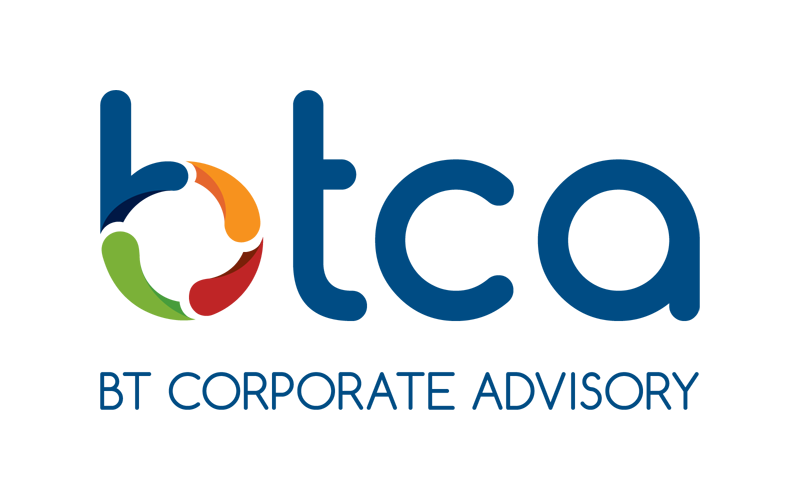Last updated: 26/03/2025.
On Tuesday, 25 March 2025, the Treasurer delivered the 2025–26 Federal Budget, outlining targeted personal income tax relief, cost-of-living support, and updates to tax compliance and regulation. A summary of key announcements is provided below.
1. Personal income tax measures
1.1 New tax cuts for individual taxpayers in 2027 and 2028
The Government will deliver new tax cuts to individual taxpayers commencing from 1 July 2026 (i.e., from the 2027 income year). Under the new tax cuts, it is proposed that:
- the (current) 16% tax rate will be reduced to 15% from 1 July 2026; and
- the 15% tax rate will be further reduced to 14% from 1 July 2027.
The personal income tax rates (excluding the Medicare levy) for the 2025 and 2026 income years are set out in the following table, along with the proposed changes to the tax rates for the 2027 and 2028 income years:
income years
income year
income year
By way of example, a taxpayer earning between $18,201 and $45,000 will get a tax cut of up to $268 in the 2027 income year and up to $536 from the 2028 income year.
1.2 Increased Medicare levy low-income thresholds
The Government will increase the Medicare levy low-income threshold amounts and phase-in ranges for single individuals, families and seniors and pensioners that apply from 1 July 2024 to provide cost-of-living relief, as set out in the table below.
The increase to the thresholds ensures that low-income individuals continue to be exempt from paying the Medicare levy or pay a reduced levy rate.
The Medicare levy low-income thresholds for single individuals and families for the 2025 income year, together with the comparative thresholds for the 2024 income year, will be as follows:
No Medicare levy payable at or below:
No Medicare levy payable at or below:
For each dependent child or student, the family income thresholds will increase by a further $4,216 (up from $4,027).
2. Other tax-related budget measures
2.1 Strengthening tax integrity
The Government will provide $999 million over four years to the ATO to extend and expand tax compliance activities. This additional funding will support the following compliance activities:
- Extension and expansion of the Shadow Economy Compliance Program to reduce shadow economy behaviour such as worker exploitation, under-reporting of taxable income, illicit tobacco and other activity that enables non-compliant businesses to undercut competition.
- Extension and expansion of the Personal Income Tax Compliance Program. This will enable the ATO to continue to deliver a combination of proactive, preventative and corrective activities in key areas of non-compliance.
- Extension of the Tax Integrity Program. This will enable the ATO to continue its engagement program to ensure timely payment of tax and superannuation liabilities by medium and large businesses and wealthy groups.
- A two-year expansion and a one-year extension of the Tax Avoidance Taskforce. This supports continued tax compliance scrutiny on multinationals and other large taxpayers.
2.2 Managed investment trusts
The Government will amend the tax laws to clarify arrangements for managed investment trusts. This will ensure legitimate investors can continue to access concessional withholding tax rates in Australia, complementing the ATO’s strengthened guidelines to prevent misuse. This measure will apply to fund payments from 13 March 2025.
The Government will also defer the start dates of the 2023/24 Budget measure, extending the clean building managed investment trust withholding tax concession, which will extend eligibility for the concession to data centres and warehouses that meet the relevant energy efficiency standard. The start date of this measure will be deferred from 1 July 2025 to the first 1 January, 1 April, 1 July or 1 October after the applicable Act receives Royal Assent.
2.3 Foreign resident capital gains tax regime
The Government will defer the start dates of the 2024/25 Budget measure, strengthening the foreign resident capital gains tax regime, which will:
- clarify and broaden the types of assets on which foreign residents are subject to CGT;
- amend the point-in-time principal asset test to a 365-day testing period; and
- require foreign residents disposing of shares and other membership interests exceeding $20 million in value to notify the ATO, prior to the transaction being executed.
The start date of this measure will be deferred from 1 July 2025 to the later of 1 October 2025 or the first 1 January, 1 April, 1 July or 1 October after the applicable Act receives Royal Assent.
3. Non-tax related budget measures of interest
3.1 Making student loans fairer
As previously announced by the Prime Minister on 3 November 2024, the Government will reduce all outstanding Higher Education Loan Program (‘HELP’) and other student debts by 20%, subject to the passage of legislation. The 20% reduction is in addition to the recent indexation reforms.
The Government is also increasing the amount that people can earn before they are required to start paying back their loans, from $54,435 in the 2025 income year to $67,000 in the 2026 income year.
3.2 Energy bill relief
The Government is extending energy bill relief by providing eligible households and small businesses with two $75 bill rebates directly off their electricity bills until 31 December 2025 to provide cost-of-living relief.
3.3 Expansion to Help to Buy scheme for first home buyers
Under the Help to Buy scheme, the Government will provide an equity contribution of up to 40% to support eligible home buyers to purchase a home with a lower deposit and a smaller mortgage.
The Government will boost the scheme by increasing income caps from $90,000 to $100,000 for individuals and from $120,000 to $160,000 for joint applicants and single parents.
Property price caps will also be increased and linked with the average house price in each state and territory, rather than dwelling price.
3.4 Restricting Foreign Ownership of Housing
The Government will take action to ensure foreign investment in housing supports the Government’s broader agenda to boost Australia’s housing supply in the following ways:
- Banning foreign persons (including temporary residents and foreign-owned companies) from purchasing established dwellings for two years from 1 April 2025, unless an exception applies.Exceptions to the ban will include investments that significantly increase housing supply or support the availability of housing on a commercial scale, and purchases by foreign-owned companies to provide housing for workers in certain circumstances.
- Providing the ATO with $5.7 million over four years, from the 2026 income year, to enforce the ban.
- Providing the ATO and Treasury with $8.9 million over four years from the 2026 income year and $1.9 million per year ongoing from the 2030 income year to implement an audit program and enhance its compliance approach to target land banking by foreign investors.
The enhanced compliance approach by the ATO and Treasury to target land banking will ensure foreign investors comply with requirements to put vacant land to use for residential and commercial developments within reasonable timeframes.
3.5 National Anti-Scam Centre
The Government will provide $6.7 million in the 2026 income year to extend the operation of the National Anti-Scam Centre within the Australian Competition and Consumer Commission (‘ACCC’) to continue protecting consumers and businesses from scam activity.
3.6 Small Business and Franchisee Support and Protection
The Government will provide $12 million over four years from the 2026 income year to support and protect small businesses. The funding will support the following:
- The ACCC to strengthen regulatory oversight of the Franchising Code of Conduct.
- The Australian Securities and Investments Commission (‘ASIC’) to improve its data analytics capability to better target enforcement activities to deter illegal phoenixing activities, particularly in the construction sector.
- Partnering with White Box Enterprises to establish a Social Enterprise Loan Fund to offer small loans to social enterprises, including work integration social enterprises, to support employment for disadvantaged Australians.
- Treasury to develop and consult on options to extend protections against unfair trading practices to small businesses and protect businesses regulated by the Franchising Code of Conduct from unfair contract terms and unfair trading practices.
3.7 Support for Hospitality Sector and Alcohol Producers
The Government will increase support for hospitality venues, brewers, distillers and wine producers through changes to the alcohol tax settings in Australia.
The Government will pause indexation on draught beer excise and excise equivalent customs duty rates for a two-year period, from August 2025.
Under this measure, biannual indexation of draught beer excise and excise equivalent customs duty rates due to occur in August 2025, February 2026, August 2026 and February 2027 will not occur. Biannual indexation will then recommence from August 2027.
The Government will also increase support available under the existing Excise remission scheme for manufacturers of alcoholic beverages (the ‘Remission scheme’) and Wine Equalisation Tax (‘WET’) producer rebate (‘Producer rebate’).
Currently, all eligible brewers and distillers can receive an excise remission under the Remission Scheme up to a cap of $350,000. All eligible wine producers can currently receive a WET rebate up to a cap of $350,000 under the Producer rebate. This measure will increase the caps for all eligible brewers, distillers and wine producers to $400,000 per financial year, from 1 July 2026.
3.8 Banning non-compete clauses for low and middle income workers
The Government will ban non-compete clauses that apply to workers earning less than the high income threshold in the Fair Work Act (currently $175,000). The Government will also close loopholes in competition law that currently allow businesses to:
- fix wages by making anti-competitive arrangements that cap workers’ pay and conditions, without the knowledge and agreement of affected workers; and
- use ‘no-poach’ agreements to block staff from being hired by competitors.
3.9 Additional Treasury resourcing
The Government will provide funding to support the delivery of Government priorities in the Treasury portfolio, including the following:
- $207 million over two years from the 2026 income year to deliver the second tranche of stabilisation and uplift of the ASIC’s business registers, including linking Director Identification Numbers to the Company Register.
- $0.8 million in the 2026 income year for the Treasury to reform Australia’s financial reporting governance arrangements.








